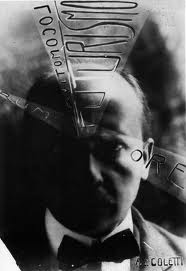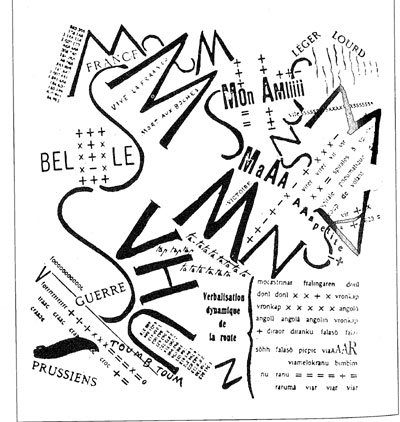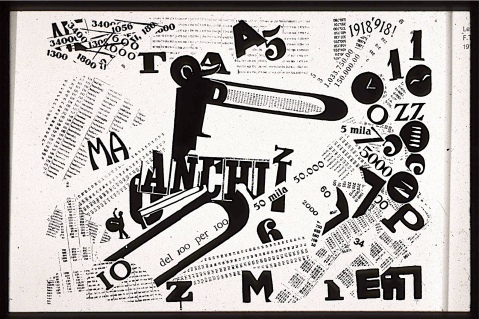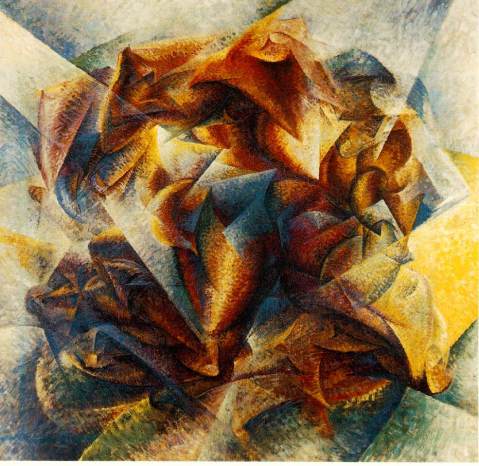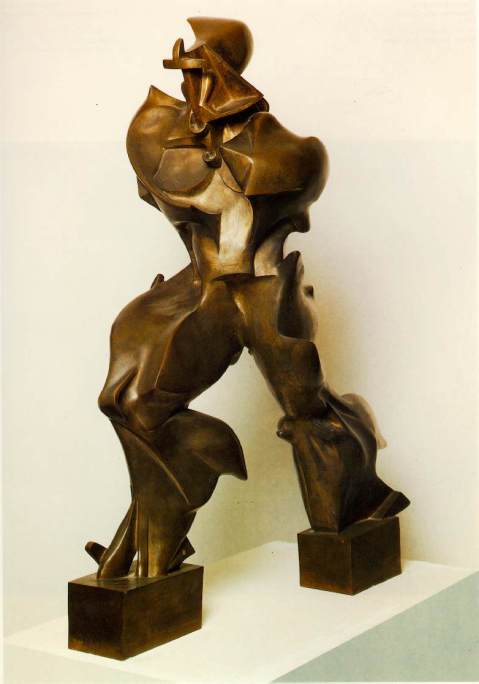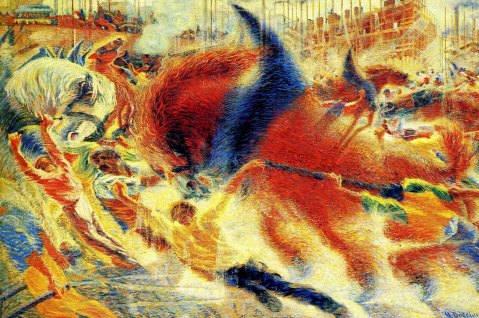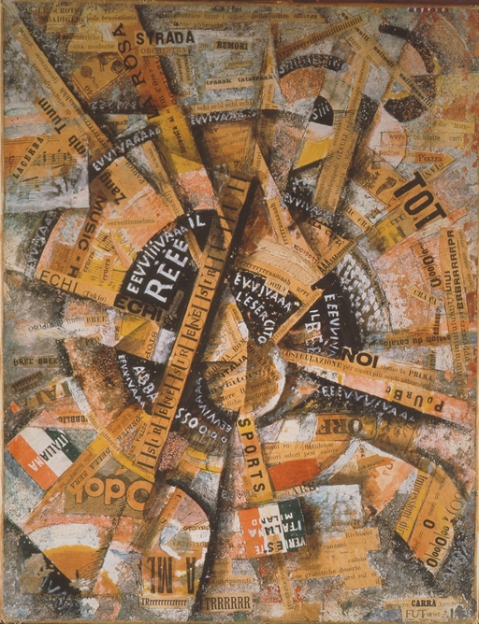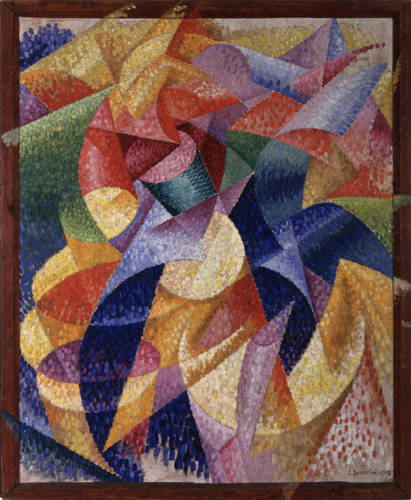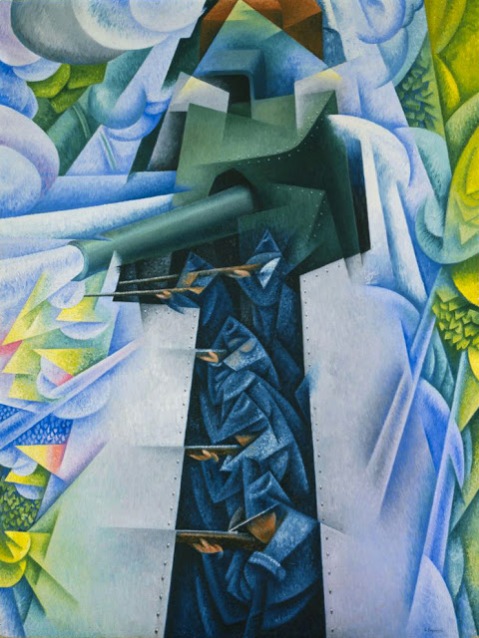The Futurist Manifesto
- We intend to sing the love of danger, the habit of energy and fearlessness.
- Courage, audacity, and revolt will be essential elements of our poetry.
- Up to now literature has exalted a pensive immobility, ecstasy, and sleep. We intend to exalt aggresive action, a feverish insomnia, the racer’s stride, the mortal leap, the punch and the slap.
- We affirm that the world’s magnificence has been enriched by a new beauty: the beauty of speed. A racing car whose hood is adorned with great pipes, like serpents of explosive breath—a roaring car that seems to ride on grapeshot is more beautiful than the Victory of Samothrace.
- We want to hymn the man at the wheel, who hurls the lance of his spirit across the Earth, along the circle of its orbit.
- The poet must spend himself with ardor, splendor, and generosity, to swell the enthusiastic fervor of the primordial elements.
- Except in struggle, there is no more beauty. No work without an aggressive character can be a masterpiece. Poetry must be conceived as a violent attack on unknown forces, to reduce and prostrate them before man.
- We stand on the last promontory of the centuries!… Why should we look back, when what we want is to break down the mysterious doors of the Impossible? Time and Space died yesterday. We already live in the absolute, because we have created eternal, omnipresent speed.
- We will glorify war—the world’s only hygiene—militarism, patriotism, the destructive gesture of freedom-bringers, beautiful ideas worth dying for, and scorn for woman.
- We will destroy the museums, libraries, academies of every kind, will fight moralism, feminism, every opportunistic or utilitarian cowardice.
- We will sing of great crowds excited by work, by pleasure, and by riot; we will sing of the multicolored, polyphonic tides of revolution in the modern capitals; we will sing of the vibrant nightly fervor of arsenals and shipyards blazing with violent electric moons; greedy railway stations that devour smoke-plumed serpents; factories hung on clouds by the crooked lines of their smoke; bridges that stride the rivers like giant gymnasts, flashing in the sun with a glitter of knives; adventurous steamers that sniff the horizon; deep-chested locomotives whose wheels paw the tracks like the hooves of enormous steel horses bridled by tubing; and the sleek flight of planes whose propellers chatter in the wind like banners and seem to cheer like an enthusiastic crowd.
F.T. Marinetti (Paris) Le Figaro, February 20, 1909
Marinetti began the “futurist manifesto” with stating “we intend to sing the love of danger, the habit of energy and fearlessness” summing up the futurist principles, the love of speed, technology and violence and above all the evolvement of the machine!! The industrial age fuelling their stance and allowing the opportunity to aid Marinetties revolutionary purpose. The invention of the car, the plane the whole triumph of man over nature. The aim was to introduce less fear in design, a time to embrace change and to try something new. “why should we look back, when what we want is to break down the mysterious doors of the impossible” (Marinetti 1909) The futurists chose to embrace modernisation, the noise and fast moving cities “the racers stride, the mortal leap” Society is now to be enriched by the beauty of speed and the hustle and bustle of fast paced life that we now all know too well. Rather than some fiercely attacking modern life and technology while still allowing themselves to enjoy the comforts and benefits that they bring. However as the need for speed and efficiency became a way of life can lead to closed minds, impatience and a life of laziness.
The tone of the futurists is aggressive although some say Marinetti took fascist roots so this may not come as surprising as Armstrong (2009, 43) states “ he was a nationalistic fascist so his tone can be off-putting” as well as stating that Marinetti is “clearly an unlikeable figure but his embrace of the industrial age and his printing press to spread powerful messages to the masses have served as a model for all who wish to influence the populace since” The futurists successfully achieved this by utilizing public anger and outrage toward the modern movement in order to arouse controversy and wide spread attention to their own values. To ‘swell the enthusiastic fervor of the primordial elements”
“We will destroy museums, libraries, academies, we will fight moralism, feminism, every opportunistic or utilitarian cowardice” (Marinetti 1909) destruction of the museums and artworks would mean the removal of history from modern day life. No art history would mean no inspiration. Art deserves remembrance we shouldn’t simply move with the times and forget the past. New art is needed to move with society. You simply could not make new art without having the history of art to source for inspiration, for research and above all for enjoyment.
The introduction of the machine to society lead to futurists beginning to use harsh dynamic lines into their artwork.
Après la Marne: This typographic piece illustrates the poem that celebrates the battle of the marne in which allies defeat Germany and established the Western front. Marinetti’s layout portrays the style of a military map. The poem “portrays General Joseph Joffre’s victorious tour of the troops after battle”(www.getty.edu)
Tumultuous Assembly: Another visual poem designed to replicate world war I breaking out in Europe to capture the modern day battlefield that the futurists greeted as “crystallization of their ambitions, indeed, as the ideal expression of their cult of violence, energy and machines” (www.getty.edu) The piece looks chaotic paired with the man made sounds situated n the piece is like the emotions of war spread all over the page, suggesting a fearful negative enviroment. “The sheets of numbers evoke gatehred crowds, or the dead and missing, the latter suggested by the black clocklike shapes” Although some argue “at right, seems an abstract compostion of numbers, words and shapes, some elements suggest a celebration after world war I” (www.getty.edu)
Manifesto of the Futurist Painters (1910) Umberto Boccioni, Carlo Carra, Luigi Russolo, Giacomo Balla, Gino Severini (www.wired.com)
With our enthusiastic adherence to Futurism, we will:
- Destroy the cult of the past, the obsession with the ancients, pedantry and academic formalism.
- Totally invalidate all kinds of imitation.
- Elevate all attempts at originality, however daring, however violent.
- Bear bravely and proudly the smear of “madness” with which they try to gag all innovators.
- Regard art critics as useless and dangerous.
- Rebel against the tyranny of words: “Harmony” and “good taste” and other loose expressions which can be used to destroy the works of Rembrandt, Goya, Rodin…
- Sweep the whole field of art clean of all themes and subjects which have been used in the past.
- Support and glory in our day-to-day world, a world which is going to be continually and splendidly transformed by victorious Science.
- The dead shall be buried in the earth’s deepest bowels! The threshold of the future will be swept free of mummies! Make room for youth, for violence, for daring
Umberto Boccioni: Dynamism of a soccer player
One of a long series of artwork of the figure in motion.“In this work a soccer player dematerializes into a luminous and flickering atmosphere, save for his firmly sculpted calf, at center.”(www.moma.org) Here Boccioni offered a demonstration of a principle he made apparent in the technical manifesto of futurist painting. “To paint a human figure you must not paint it; you must render the whole of its surrounding atmosphere . . . movement and light destroy the materiality of bodies.” Boccioni is successful in creating an atmosphere of youth and energy. This is achieved by the range of combined colours and the use of stippled brushwork.
Unique forms of Continuity in space
“Sculpture,” Boccioni insisted, “should bring to life the object by making visible its prolongation into space. The confining of the enclosed statue should be abolished. The figure must be opened up and fused in space.” The bulging abstract shapes represent the muscles of the figure forces as if “under the distorting pressures of supersonic speed” The sculpture depicts strength force and violence “never before had organic velocity and energy been so emphatically expressed” (http://serdar-hizil-art.com)
In previous work Bocionni is seen using small dots and dashes to create texture and movement in his paintings but in The City Rises, “he tore the divisionist veil of dots into ribbons of color somewhat as van Gogh, had done in 1889 with Seurat’s Neo-Impressionist technique.” (http://serdar-hizil-art.com) The energy of the painting is successfully communicated by these quick successive brush strokes, they show the busy movement of the straining men.
It is a scene of labours of men on a construction site utilising the power of horses to their advantage. Power dominates the piece as the strong horse is the central focus. The theme is the construction of new buildings as you can see the partially built building in the top right. You can boldly see and feel the strength and energy of the piece as the use of bold dramatic colours, the colours becoming darker wen situated on the central horse, featuring none of the lighter shades that are featured elsewhere “these shadows draw the viewers eye into the painting and their mind into action.” (Widley 2010) It Creates the feeling of aggression capturing the essence of futurism. “Compositionally this painting does come across as unbalanced and discordant which could be considered a metaphor for the industrial age therefore it does capture the essence of Futurism.” (Widley 2010)
Carlo Carra
The collage poem has been created to distinctly move outwards from the centre in fragments of circles creating sharp ray like lines coming out from the centre along with the featured words.This gives the impression of power from the centre almost like an explosion or loud noise and the outer is the ripple effect. The use of the darker colored fragments give a sense of depth and three dimension.
Lots Daughters 1915
By 1915 Carra began to break free on the futurist movement and began to paint in a more realist style after meeting painter Giogio de Chirico. For instance Lots Daughters attempts to capture stillness, a huge contrast to his earlier work. “Carrà and de Chirico called their new style Metaphysical painting” (www.britannica.com)
Gino severini
Sea = Dancer 1914
In this canvas you can see the movement of the sea within the curvaceous shapes. The use of dark and light tones allow for movement and a three dimensional effect. The dotted brush work creates movement. “The large curling planes are stippled with brilliant staccato dabs of paint that cause all surfaces to vibrate as if with light. (Barr 1936, 58)
Gino Severini has been said to be was the first of the futurists to come into contact with Cubism. Previous Cubism focused on a small number of objects, and “seldom cast its gaze on anything outside the painter’s studio”(http://blogs.smithsonianmag.com) The Futurists, on the other hand, were interested in the innovative life and inventions outside the studio, cars, trains and objects of modern life. Cubism now took new meaning rather than using fractured forms to analyse an object futurist used fragmentation to indicate “lines of force” to crate energy rather than a still object. Bold colour created the new style of cubism that was described as “drab in its coloration.” (http://blogs.smithsonianmag.com)
Armoured Train in Action 1915
Along with all futurists severini was obsessed by the mechanized war. You can see the five figures aiming gunfire in a linear pattern. Smoke from the canon is a solid strong shape, not so much casting a mask or smoke screen but swallowing the landscape within it the force. Futurists believed war could generate a new Italian identity one of military and cultural power.
Bibliography
Image sources
- http://www.ucd.ie/modernism/overview/p3.html
- http://ookaboo.com/o/pictures/picture/12871249/Après_la_Marne_Joffre_visita_le_front_en
- http://www.flickr.com/photos/laurapopdesign/3353688828
- http://www.twocoatsofpaint.com/2010/06/twitter-notes.html
- http://www.wright.edu/cola/Dept/eng/blakelock/rockweb2/rockpgs/R99/origindustrial2.htm
- http://theendofbeing.com/?attachment_id=11182
- http://collagemuseum.com/carra001.htm
- http://www.artline.ro/Carlo_Carra-19845-2-n.html
- http://www.midcenturia.com/2011/09/works-of-gino-severini.html
Text sources
- Alfred H. Barr, Jr., Cubism and Abstract Art (New York: Museum of Modern Art, 1936), p. 58.
- Helen Armstrong, Graphic Design Theory: Readings from the field, New York, Princeton architectual press 2009
Online sources
- http://www.getty.edu/art/exhibitions/tumultuous/ (Accessed 12/1/13)
- Bruce Sterling, November 11, 2008 http://www.wired.com/beyond_the_beyond/2008/11/manifesto-of-th (accessed 20/1/13)
- http://www.moma.org/collection/object.php?object_id=80009 (accessed 20/1/13)
- http://www.britannica.com/EBchecked/topic/96840/Carlo-Carra (accessed 20/1/13)
- http://blogs.smithsonianmag.com/art/2012/04/futurism-is-still-influential-despite-its-dark-side/#ixzz2IcHAAGwQ (accessed 20/1/13)
- http://serdar-hizli-art.com/modern_art_masters/manifesto_of_the_futurist_painters.htm ( accessed 21/1/13)
- J Widly, Sep 1, 2010, article: Futurism and umberto boccionis the city rises. Can b found at (http://suite101.com/article/futurism-and-umberto-boccionis-the-city-rises/) ( accessed 21/1/13)
